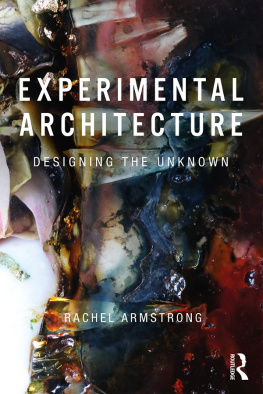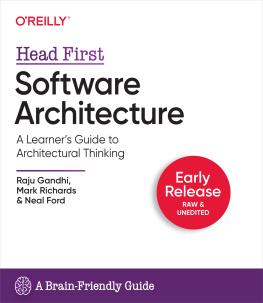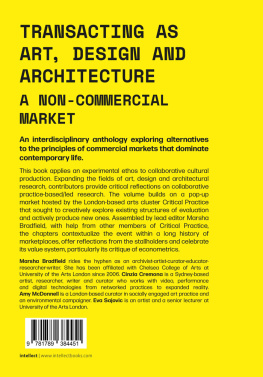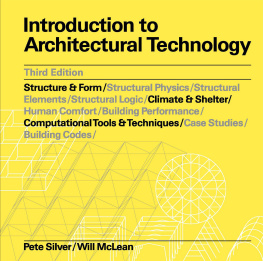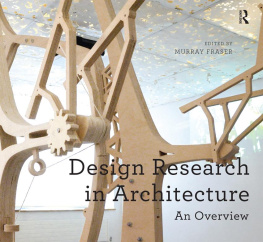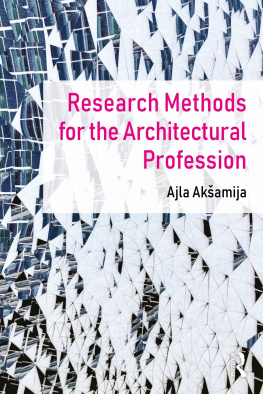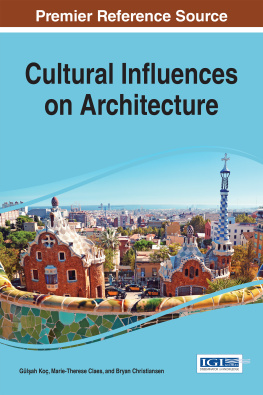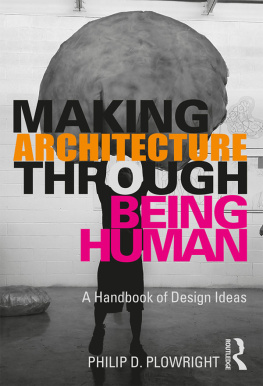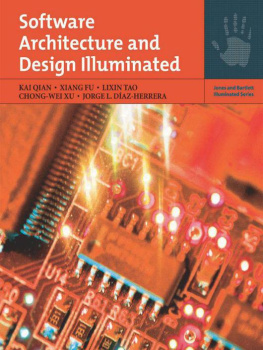
EXPERIMENTAL ARCHITECTURE
In this ground-breaking book, the first to provide an overview of the theory and practice of experimental architecture, Rachel Armstrong explores how interdisciplinary, design-led research practices are beginning to redefine the possibilities of architecture as a profession. Drawing on experts from disciplines as varied as information technology, mathematics, poetry, graphic design, scenography, bacteriology, marine applied science and robotics, Professor Armstrong delineates original, cutting-edge architectural experiments through essays, quotes, poetry, equations and stories.
Written by an acknowledged pioneer of architectural experiment, this visionary book is ideal for students and researchers wishing to engage in experimental, practice-based architectural and artistic research. It introduces radical new ideas about architecture and provides ideas and inspiration which students and researchers can apply in their own work and proposals, while practitioners can draw on it to transform their creative assumptions and develop thereby a distinctive edge to stand out in a highly competitive profession.
Rachel Armstrong is Professor of Experimental Architecture at Newcastle University. Her work focuses on establishing the conditions for a living architecture that couples the computational properties of the natural world with building structures and infrastructures. She is Director and founder of the Experimental Architecture Group (EAG) whose work has been published, exhibited and performed at international biennales, and Coordinator for the Living Architecture project, which is an ongoing collaboration of experts from universities in the UK, Spain, Italy and Austria. She has written a number of academic books including: Liquid Life: On Non-Linear Materiality (2019); Soft Living Architecture: An Alternative View of Bio-informed Practice (2018); Star Ark: A Living, Self-Sustaining Spaceship (2016); Vibrant Architecture: Matter as a CoDesigner of Living Structures (2015). Her fiction books include Invisible Ecologies (2019) and Origamy (2018).
EXPERIMENTAL
ARCHITECTURE
Designing the Unknown
Rachel Armstrong

First published 2020
by Routledge
2 Park Square, Milton Park, Abingdon, Oxon OX14 4RN
and by Routledge
52 Vanderbilt Avenue, New York, NY 10017
Routledge is an imprint of the Taylor & Francis Group, an informa business
2020 Rachel Armstrong
The right of Rachel Armstrong to be identified as author of this work has been asserted by her in accordance with sections 77 and 78 of the Copyright, Designs and Patents Act 1988.
All rights reserved. No part of this book may be reprinted or reproduced or utilised in any form or by any electronic, mechanical, or other means, now known or hereafter invented, including photocopying and recording, or in any information storage or retrieval system, without permission in writing from the publishers.
Trademark notice : Product or corporate names may be trademarks or registered trademarks, and are used only for identification and explanation without intent to infringe.
British Library Cataloguing-in-Publication Data
A catalogue record for this book is available from the British Library
Library of Congress Cataloging-in-Publication Data
Names: Armstrong, Rachel, 1966- author.
Title: Experimental architecture : designing the unknown / Rachel Armstrong.
Description: New York : Routledge, 2019. | Includes bibliographical references and index.
Identifiers: LCCN 2019002655| ISBN 9781138575240 (hb : alk. paper) | ISBN 9781138575257 (pb : alk. paper) | ISBN 9781351272483 (ebook)
Subjects: LCSH: Architectural practice. | ArchitectureResearch.
Classification: LCC NA1995 .A765 2019 | DDC 720.1dc23
LC record available at https://lccn.loc.gov/2019002655
ISBN: 978-1-138-57524-0 (hbk)
ISBN: 978-1-138-57525-7 (pbk)
ISBN: 978-1-351-27248-3 (ebk)
Typeset in Bembo
by Swales & Willis Ltd, Exeter, Devon, UK
Front Cover: Cracked Hermione I, Living Brick detail, by Rachel Armstrong and Rolf Hughes, 2018, Photograph by Rolf Hughes.
Back Cover: Cracked Hermione II, Living Brick detail, by Rachel Armstrong and Rolf Hughes, 2018. Photograph by Rolf Hughes.
... we still dont know where fish go in a storm, we know a little bit about when they go.
(Preston, 2015)
Opposing the overwhelming abstraction of architectural ideas and the encroachment of neoliberalism, experimental architecture prototypes are subversive, resisting control, componentisation and mechanisation. Their fundamental unpredictability and unruly pluripotentiality evade traditional design protocols, so that architects are required to continually negotiate their terms of engagement with such agentised bodies. Since the twentieth century has ill equipped architects to quell natures monstrous transformations, or impose order upon their undifferentiated expanses, experimental architects draw upon the wicked principles of ecosystems to establish seven principles that renegotiate the terms of human inhabitation and the nature of a lively world:
Experimental architecture exceeds the human scale, embracing the ephemeral and material realms from the subatomic scale to the cosmos extending beyond the limits of its surfaces and deep into its own materiality.
Experimental architecture grows and develops from seeds of exchange between inhabitants and their sites.
Engaging in continual negotiation with contexts, people and materials, experimental architects participate in the formation of ecosystems and resource cycles.
Rendering indistinct its disciplinary ontology, ecological architecture embraces its radical transdisciplinary nature, assimilating countless disciplines, practices and worldviews. Experimental architects develop their own toolsets and evaluation systems through the production of prototypes that perform as avatars for shaping the process of inhabitation.
Remembering and considering the consequences of its actions, experimental architecture forges values within spaces, appreciating their multiple histories and emerging futures.
Integrated with the cycles of life and death, the prototypes of experimental architecture are not materially immortal but return to the soil when they are no longer inhabited. In doing so, they shape the memories of spaces.
Experimental architecture embraces hybrids, exceptions, monsters, interlacing of opposites and of all contradictions, grotesques, inconsistencies: LIFE (Tzara, 1918).
Ellie Abrons is a licensed architect, principal of T + E + A + M and Assistant Professor of Architecture at the University of Michigans Taubman College of Architecture and Urban Planning, where she was the A. Alfred Taubman Fellow in 20092010. Ellie received her Masters of Architecture from the University of California, Los Angeles where she graduated with distinction and received the AIA Certificate of Merit. She received her BA in art history and gender studies from New York University and has a certificate in graphic and digital design from Parsons School of Design. Ellie has received residency fellowships at the Akademie Schloss Solitude in Stuttgartand The MacDowell Colony in New Hampshire. Her work has been exhibited at the Venice Biennale, Storefront for Art and Architecture, A + D Gallery and the Architectural Association. T + E + A + M were the winners of the 2017 Adrian Smith Prize for the Ragdale Ring and participants in the 2017 Chicago Architecture Biennial. From 2010 2015, Ellie led the design practice EADO.
Next page
